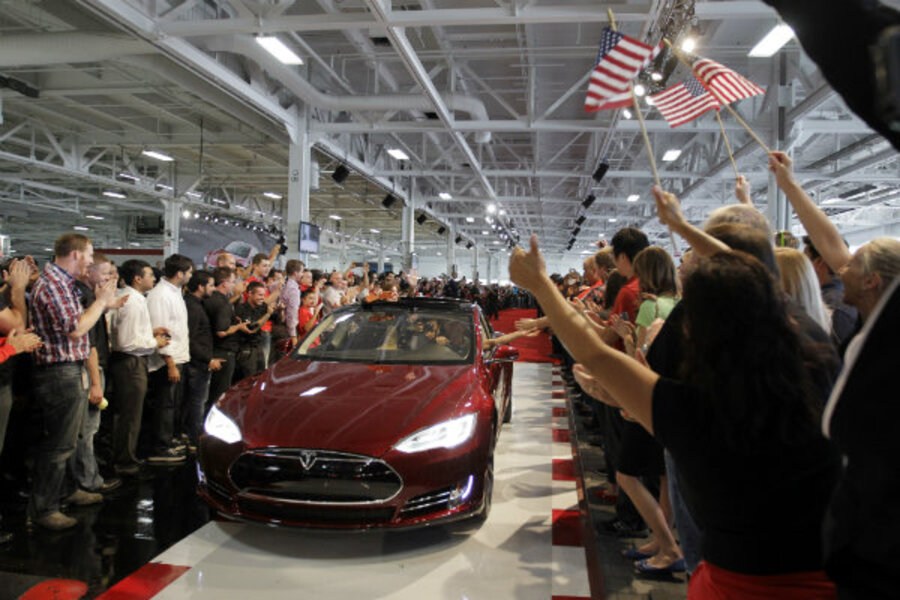Don't listen to the Chicken Littles: Obama made smart investments in green tech
Loading...
| Cambridge, Mass. and Washington
There seem to be a lot of Chicken Littles yelling about the clean technology industry lately. Despite a myriad of successes, a few falling acorns are mis-portrayed in a wave of statements and stories claiming the sky is falling on clean technology. Unfortunately, these predictions of economic collapse often lack context, focusing on a single failed company instead of the success of the clean technology industry as a whole.
Take the stories about A123 Systems, a Massachusetts-based electric-car battery manufacturer that received funds from the 2009 economic stimulus package to build a factory in Michigan. It spent a little more than half of the $249 million it was approved for before declaring bankruptcy in October.
Politicians and advocacy groups quickly portrayed the bankruptcy as a sign that clean tech was a bad investment and that the Obama administration made a mistake when it put support for energy innovators and the jobs they create as one of the centerpieces of its 2009 stimulus package.
Yes, a battery company failed. But that doesn’t mean that the sky is falling. Far from it. These programs are succeeding because, not in spite of, a willingness to take some risks on a better future.
Federal backing supports technologies that promise great rewards for the US, but carry greater risks than private investors are usually willing to take on their own. America simply cannot afford to pass up the opportunity to bolster growing industries that improve our nation’s energy, economic, and environmental fortunes. The country started subsidizing oil and gas development nearly 100 years ago because of the benefits they could provide then. Now it makes sense now to nurture new, promising low-carbon alternatives instead.
The federal government’s track record on supporting clean tech is an enviable one, with far more winners than losers. Of the 30 battery and electric-drive firms that received stimulus funding, 28 continue to deliver. And in the case of A123 and EnerDel, the other such company that went into bankruptcy, work will continue at these US facilities. Further, A123 and EnerDel represent just 18 percent of the vehicle battery grants, meaning 82 percent of that portfolio is still performing.
The large number of renewable energy companies that received taxpayer backing are doing well, too. In fact, of the 26 that received federal loans, 23 are still on track. One other, Beacon Power, is going through bankruptcy, but it is still operating, and has nearly paid back its entire federally backed loan. The other two were Abound and Solyndra, the latter of which became the first failed company the Chicken Littles thoroughly politicized. But the collective risk from those three companies totals just 6 percent of the portfolio. In other words, 94 percent of the investments are still performing.
The truth is that any emerging technology has its starts and stops. Despite the critics’ naysaying prophecies, clean tech is on the rise nationwide in large part due to federal investment. A123 was manufacturing batteries for plug-in vehicles – the sales of which tripled over model year 2012 to more than 37,000 vehicles. The strength of the early electric vehicle market is impressive, especially considering it faces larger barriers than hybrids did 10 years ago. Nevertheless, electric vehicle sales are double those of hybrids back then. On top of that, an electric vehicle, the Model S from Tesla, another company that received federal help, received Motor Trend’s coveted Car of the Year award for 2013.
Renewable energy is seeing similar growth. Over the last five years, wind capacity and generation has more than tripled, and solar power has more than quadrupled. Last summer, installed wind capacity soared past the 50,000 megawatt mark, enough to power nearly 13 million homes, equivalent to all the homes in Alabama, Colorado, Connecticut, Nevada, Virginia, and Wisconsin combined, according to the American Wind Energy Association. And wind energy is now projected to be cost-competitive with coal, something the naysayers said would never be possible.
Developing game-changing technology is a marathon, not a sprint.
The lesson here is simple: Don’t listen to the Chicken Littles. Of course there are risks when government and industry invest boldly in new technology. But if they don’t, America will cede its leadership on clean transportation and energy technology to other nations like China that already have thriving green industries that also benefited from government assistance.
And if the US doesn’t invest in clean technology, we’ll miss out on the industry’s upsides, too: creating jobs, saving consumers money, protecting health, helping the nation cut its oil use in half in 20 years, and cutting global warming emissions from burning oil and coal.
The sky isn’t falling. It’s getting cleaner, clearer, and easier to see a brighter economic and environmental future.
John Rogers is a senior energy analyst in the Climate and Energy Program at the Union of Concerned Scientists. David Friedman is the senior engineer in the Clean Vehicles Program at the Union of Concerned Scientists.







